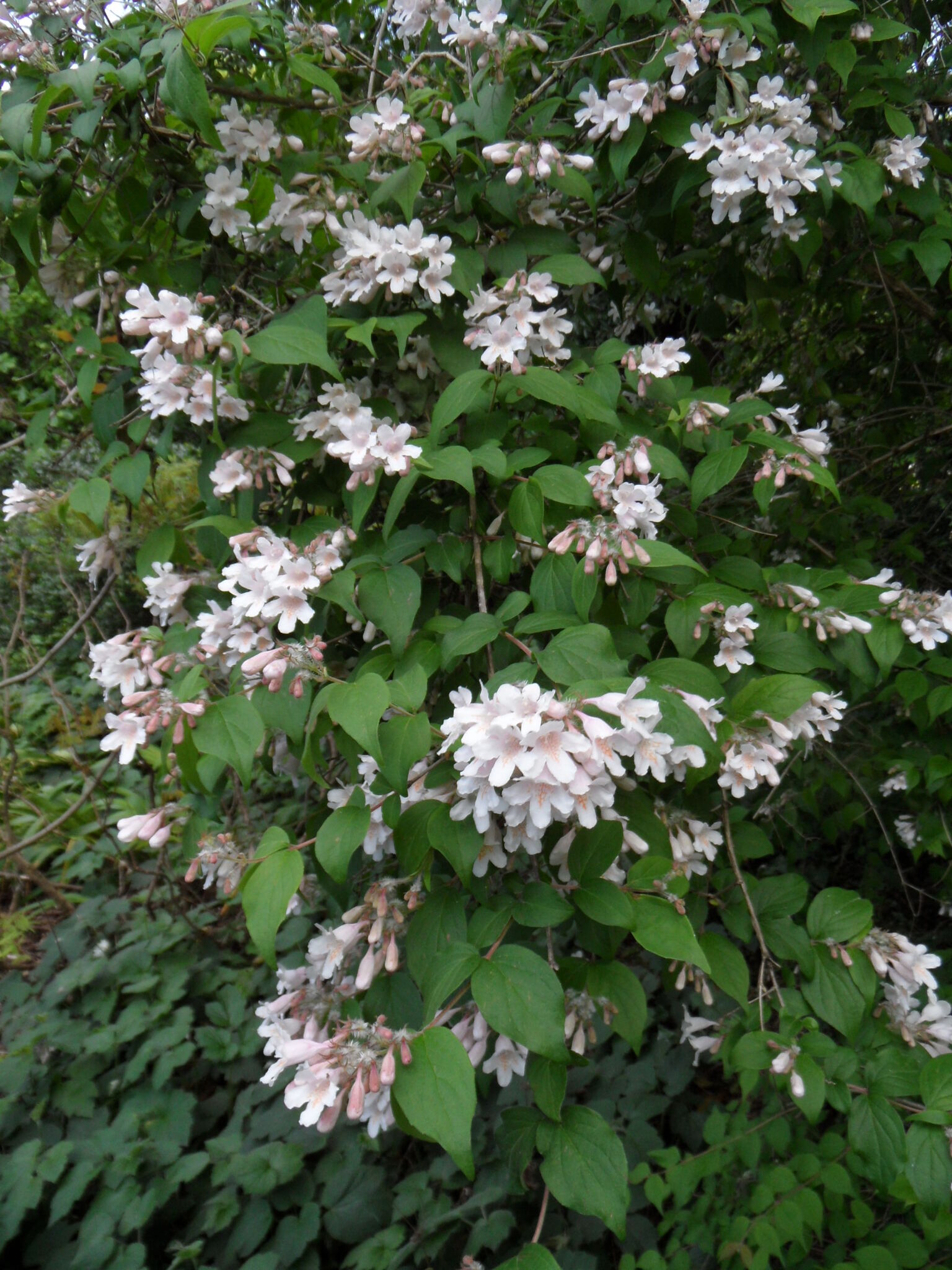
Commemorating Richard Kolkwitz (b. 1873), Professor of Botany in Berlin, c. 1900.
Deciduous shrub to 3 m or so tall with upright branches and bark peeling on old plants. Leaves opposite, ovate, to about 6 cm long, 4 cm wide,margins sometimes saw-toothed, tip long-pointed. Flower clusters terminal; spring to summer. Flowers in pairs on thin stalks. Calyx of 5-6 persistent hairy sepals. Corolla of 5 lobes, about 1.5 cm long, bell-shaped, hairy, white, suffused with pink, throat with yellow-orange markings. Stamens 4. Ovary 3-chambered but only 1 fertile. Fruit a 1-seeded capsule.
Grown for the delicate masses of feathery pink flowers.
Softwood and semi-hardwood cuttings and suckers.
Fruit an egg-shaped, whiskery, beaked, 1-seeded capsule with persistent, non-enlarging, elongated sepals.
1 species from C China.
Source: (2002). Caprifoliaceae. In: . Horticultural Flora of South-eastern Australia. Volume 4. Flowering plants. Dicotyledons. Part 3. The identification of garden and cultivated plants. University of New South Wales Press.
